MIZUI THROUGH THE WORLD
Symposium
The Sculpture Symposium is an opportunity for a new direction of Mizui’s work with a view to developing and promoting the sense of sculptural monumentality in urban beauty. It is also a competition between artists aiming to demonstrate the ability of each to shape the same material. This movement has been carried out since 1959, at the Quarry of St. Margarethen, Austria. Mizui’s first participation in Austria dates back to 1960. There he discovered the charm of working from large 4-meter blocks of stone. In 1962, he produced the work, the Key of Love (stone / 4 mx 0.9 x 0.6) in front of the Berlin Wall, in Germany, taking up the slogan of this Symposium: “the wall in the east, the creation of a sculpture in the west ”. This work won the German Critics’ Prize. Mizui asserted, “There is a wall that separates east and west. The wall, it makes a sad story like every day. Our silent anger supported this meeting.” This statue has since been moved, it is currently presented in Berlin Square. Mizui attended the Manazuru Symposium, Japan with the support of Asahi Shinbun, as a leader, and also participated in eleven other Symposia in eight different countries.
“There is a wall that separates east and west. The wall, it makes a sad story like every day. Our silent anger has supported this meeting.”
Yasuo Mizui with Berlin
His work in Berlin was a big step in deep reflection on the “walls” of the world. During the symposium, they made the slogan “East made walls, West made sculptures”.
Next to “Walls, he made conversation with his heart through the creation of the exterior as a symbol of the act of freedom.” His stay in Berlin for almost a year, spring, summer, autumn and winter, his deep thoughts appear in the titles “Clef d’amore” and “Chaplet.” It was his prayer that art be the key to love of the world.
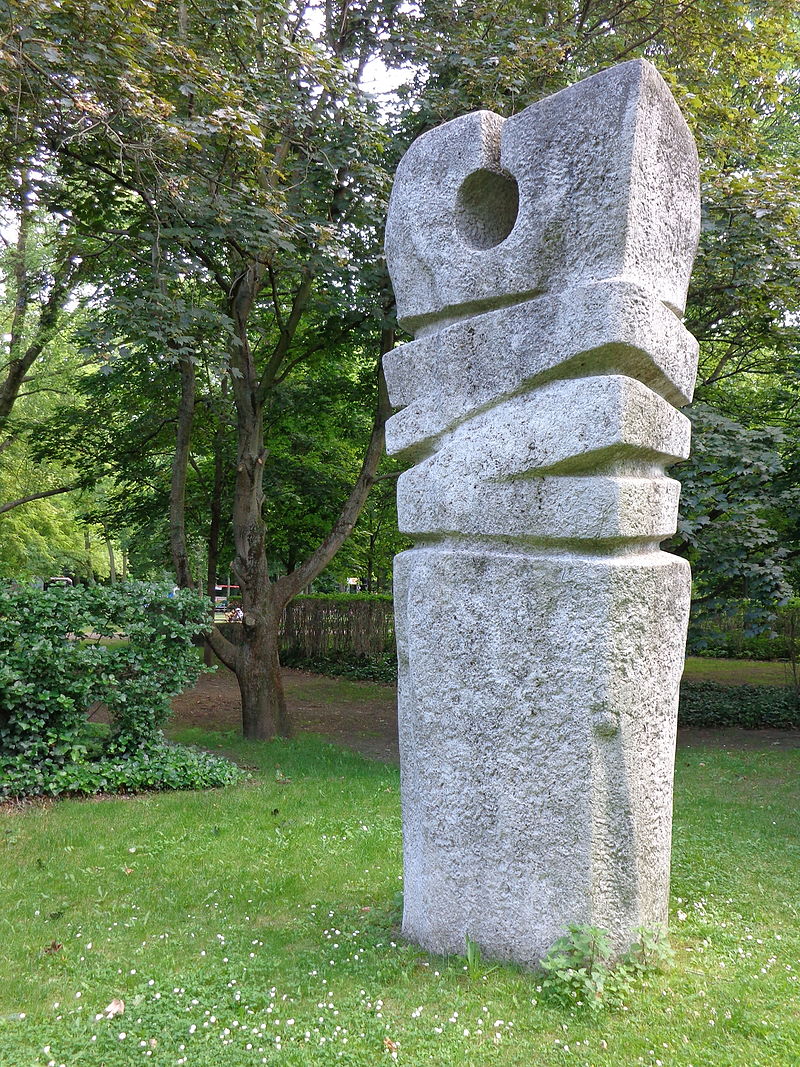
Key of Love
(stone / 4 m x 0,9 x 0.6 /1 962 / Berlin, Symposium)
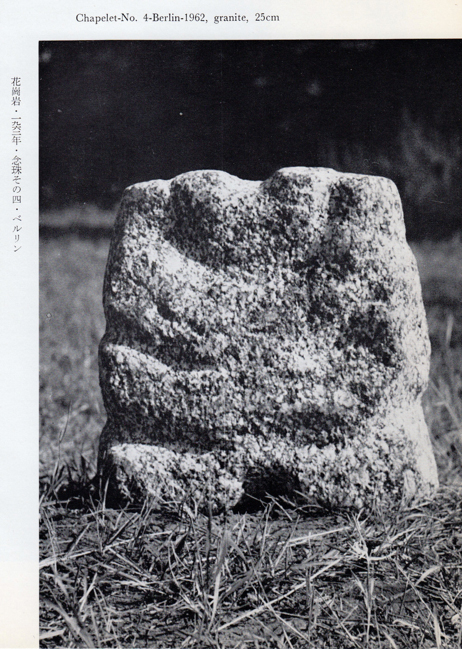
Chapelet N°4
(stone / 2 m x 0,7 x 0.7/1962 / Berlin)
AUSTRIA
The magnificent cream-colored sandstone of St. Margareden has been used in the construction of churches and palaces in Vienna since the Middle Ages. Here the first symposium started. Mizui participated in the second (1960) for the first time.
He carved a stone 4 meters high, from that moment on, he was fascinated by stone.
“The Key to Heaven” may be a tribute to friends who died in the war.
this title was also indicative of Mizui’s life, which began after the war.
The work of sculpture must have been a journey to find paradise.
Key to Heaven
(stone/3.8m x 0.8 x 0.85/1960 ) Made in St. Margarethen Germany, then, moved to Zollikon, Zurich, Switzerland.
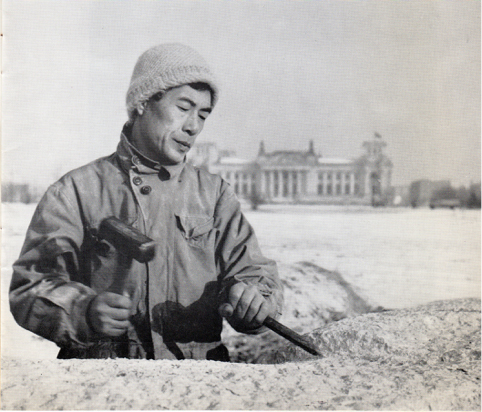
Key of Love
Republic Square in Berlin
“The East makes walls, the West makes sculptures.”
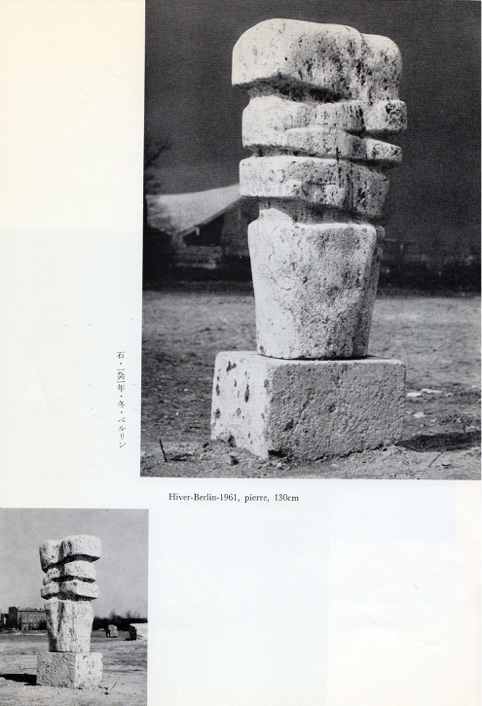
Winter in Berlin
(stone / 1,3 m x 0,6 x 0.6/1963 / Berlin)
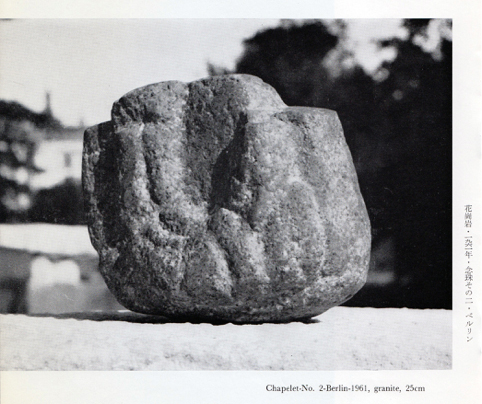
Chapelet N°2
(stone 25 cm / Berlin)
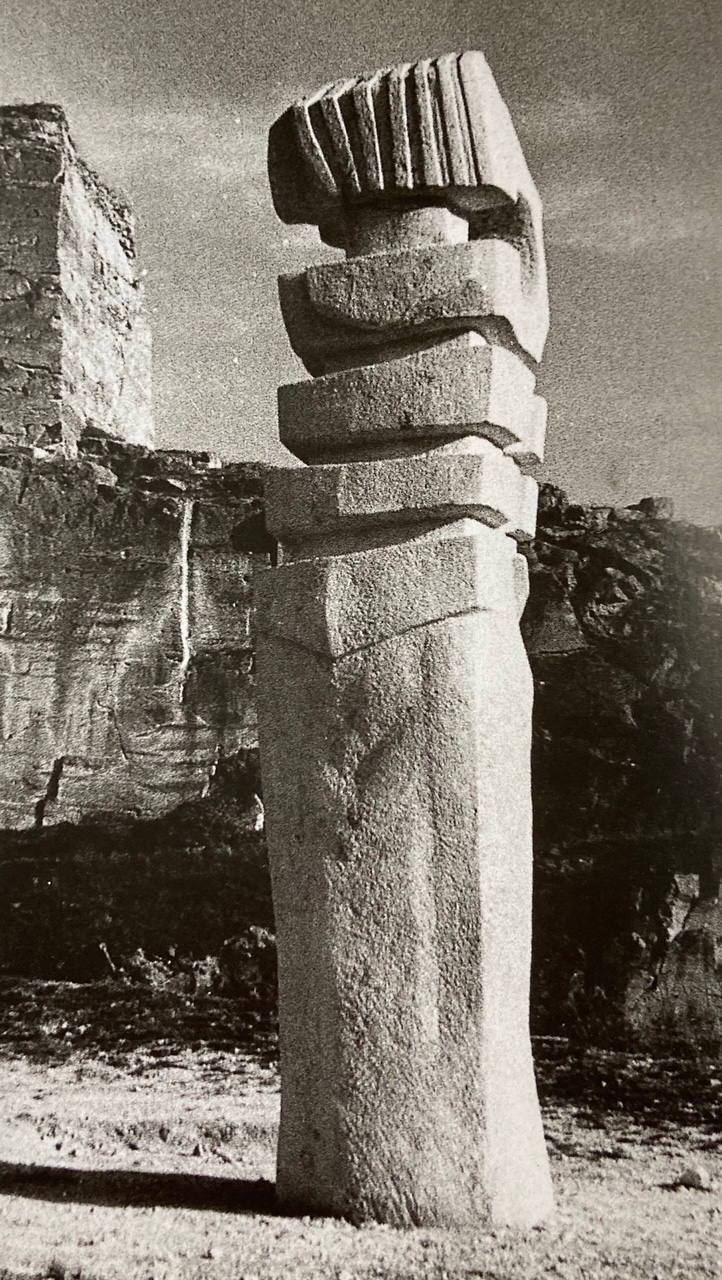
Yasuo Mizui in Japan
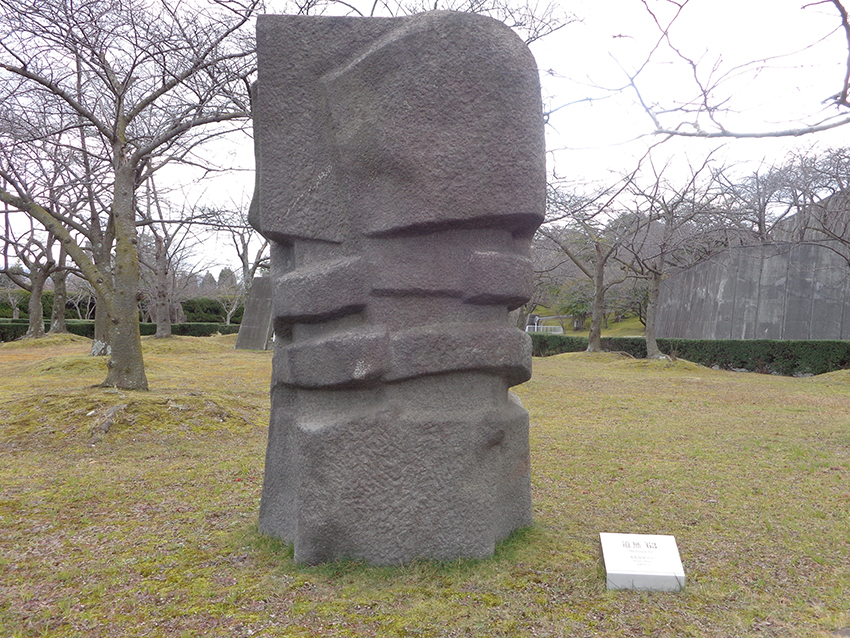
The 1st Japanese Symposium conducted by Asahi Shimbun, was held for three months from July 1963 on the Michinashi coast of the city of Manazuru, Kanagawa prefecture. The participants were made up of 12 sculptors selected from Japan and abroad. After the Manazuru Symposium, the works were transported to Shinjuku Gyoen Garden, Tokyo, and the 15 works were exhibited as an open-air exhibition from October 5 to 31 of the same year. Afterwards, an exhibition titled “World Modern Sculpture Symposium” was held at Shinjuku Odakyu Department Store in December of the same year. During the 1964 Olympic Games the following year, 15 major works adorned the area around the stadium. After the Tokyo Olympics, this work was purchased by PL in Tondabayashi, Osaka, and is still in place today.
《道無》MIchinashi
(stone / 2 mx 1 x 0.9 / 1963 / PL Kyodan, Osaka Prefecture, Symposium in Japan by Asahi Shinbun. Then, exhibited in front of the Yoyogi National Gymnasium during the Tokyo Olympics in 1964. After the Olympics, purchased by Church of Perfect Liberty in Osaka.
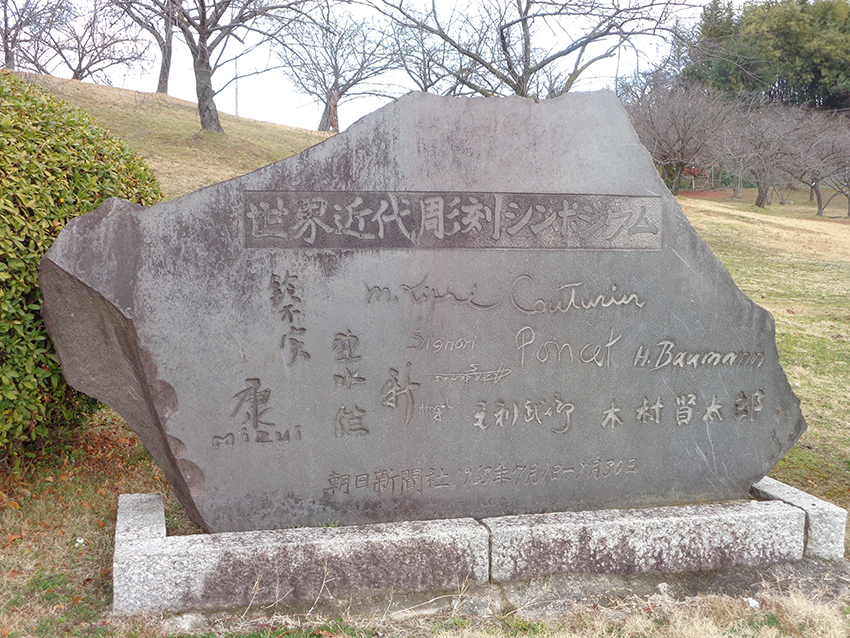
The monument of the International Symposium in Japan (1963)
“ The Nachi Waterfall in Japan would gush out somewhere in France as the rain continually digs into the rock of the fountain.”
Yasuo Mizuo
Between Japan and France
He will use his sensitivity to enter into a dialogue with the stone, in pursuit of organic forms …
He will exhibit and respond to several state orders, settling in France …
He will exhibit in Tokyo, Ogaki, Osaka, Hakone, Gifu …
But also in Austria, Berlin (Germany), Negev (Israel), Yugoslavia, Ruzbachy (Czechoslovakia), Palm Beach (Florida) …


Jean- Rosenberg, professor at the University of Poitiers, says of Mizui’s sculpture:
“In his non-figurative art, the temporal dimension is absent. There are no messages encoded through symbols or figures. His work is cosmic. You can feel the origin of life and evolution; it represents universal entities, not individualized, but as they appear at the beginning of evolution “.


